Flag of red and white squares. White-Blue Flag: History and Modernity
Strange flags with cheerful colors.
NO20. Uganda
In the center of the flag, there is a white circle with the image of a national symbol - the Eastern Veginous Crane, looking towards the trek. Three colors symbolize African people (black), African Sun (yellow) and African fraternity (red - blood color, uniting all people).
NO19. Zimbabwe
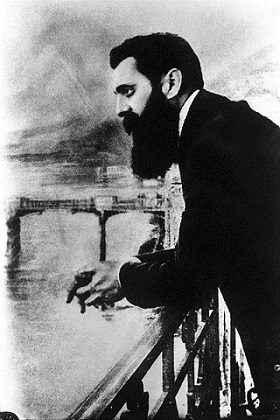
The green flag color symbolizes the agriculture and rural areas of Zimbabwe. Yellow - minerals that are rich in the country. The red color personifies blood, spilled during the war of independence, black - the ethnic personality of the indigenous African peoples of Zimbabwe, and the White is the world. "Bird Zimbabwe" (a carved statuette of steatitis found in the ruins of the ancient city of Big Zimbabwe) reminds of the history of Zimbabwe, the Red Star about the revolutionary struggle.
NO18. Seychelles
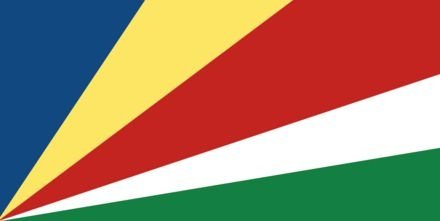
Blue color on the flag personifies the sky and the sea that surrounds Seychelles, yellow - the sun, which provides the ease of being, the red color displays the unity of people and their desire to work for the sake of peace, unity and love, white represents the rule of law, green - the land and the surrounding living nature .
NO17. Marshall Islands
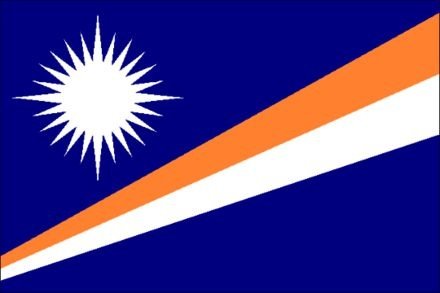
Blue colour Symbolizes the Pacific Ocean. Orange - courage and courage. White color - peace. The star personifies the Christian Cross, and its 24 beam is the number of constituencies (of which 4 are the largest - Majuro, Ebeie, Jaliit and Magtail).
NO16. Cambam
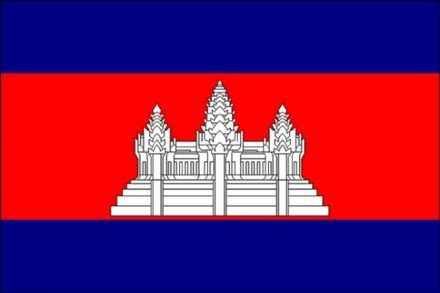
Blue flag color symbolizes monarchical power, red - people, white - religion (Buddhism and brahmanism). The Angkor Wat temple symbolizes the universe, higher divine power And the royal power (according to Cambodian tradition, the monarch is an intermediary between deities and people). Thus, the central symbol of the flag means the triad - a religion-nation-king.
NO15. Antigua and Barbuda
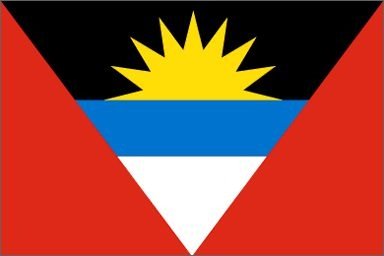
The rising sun displays in the symbolic form of a new era. Black color indicates the African roots of the inhabitants. Red color symbolizes the energy of the people. Serial coloring - yellow, blue and white (down from the sun) - the sun, the sea, and the sand. Blue color - symbol of hope, and also symbolizes the Caribbean Sea. V-shaped form - a victory symbol.
NO14. Burundi
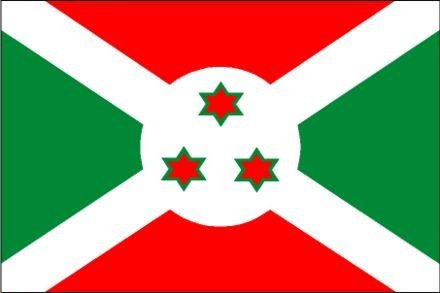
The colors of the flag symbolize the struggle for independence (red), hope (green) and the world (white). Three stars personify the national motto: "Unity. Work. Progress".
NO13. South Korea
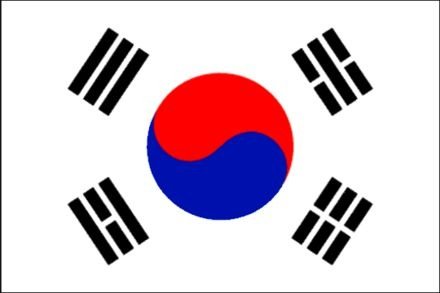
White color is national Color Korea. The central emblem reflects the views on the Universe as a single whole (Taoism); In this figure, the two opposite energies "Yin" and "Yang" are combined and interact. Throngs are located in the corners, which also consist of "yin" (broken strips) and "Yang" (solid strips). Trigrammes mean (from the top of the Tree clockwise): Sky, South, Summer and Air; Moon, west, autumn and water; Earth, North, Winter and Earth; Sun, East, Spring and Fire. Black color means vigilance, durability, justice and chastity.
NO12. Canada
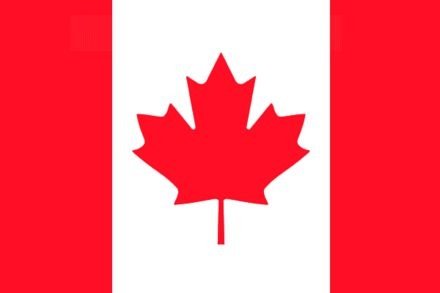
The flag symbolizes the two ocean, the shores of Canada - the quiet and atlantic - and the country prisonered between them. The maple leaf must emphasize the unity of the nation. Red - the color of the Cross of St. George, symbolizes the UK. White - the color of the French monarchy.
According to one of the legends, maple Leaf He became a symbol of Canada under the following circumstances. In 1860, the Welsh Prince was visited for the first time. A high guest meeting was planned in Toronto. The population of the city was preparing to welcome Prince his national symbols. So, the English emigrants brought roses, Scottish - Chertland branches (Symbol of Scotland). However, for children of emigrants born in Canada, the plant symbol was not found, since the only Canadian symbol was beaver. However, in the late 1830s, the Baptist Society of St. John in Quebec took the maple leaf as a symbol. It was offered to carry Canadians at a meeting with Prince Wales.
NO11. Macedonia
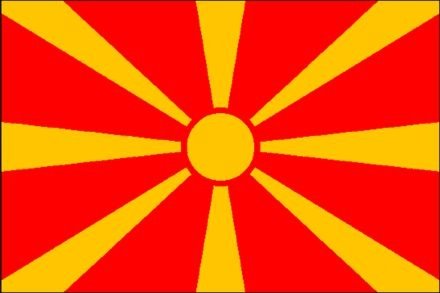
The flag is a red cloth with the image of the Sun yellow color With eight diverging rays. He personifies the "New Sun of Freedom", sneeze in the national anthem of Macedonia.
NO10. Grenada
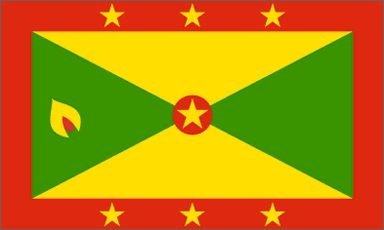
Yellow color symbolizes the sun over the Grenada and the friendliness of her citizens, green - agriculture, red - harmony, unity and courage. Seven stars personify the seven administrative units of the Grenada. On the flag placed nutmeg, whose cultivation is the basis of the Grenada economy. In addition, the Grenada itself is one of the world's leading manufacturers of nutmeg.
NO9. Zambia
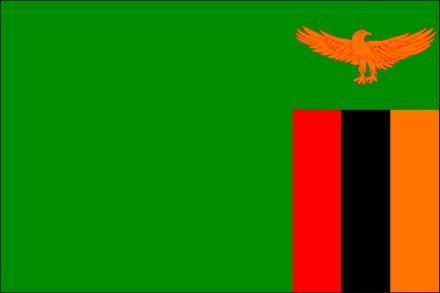
Green color symbolizes natural resources. Red color symbolizes blood, spilled by the independence of Zambia. Black color personifies the population of Zambia. Orange color Symbolizes the wealth of the country mineral resources (First of all, copper). Orlan-Krikun personifies the elevation of Zambia's people over government issues.
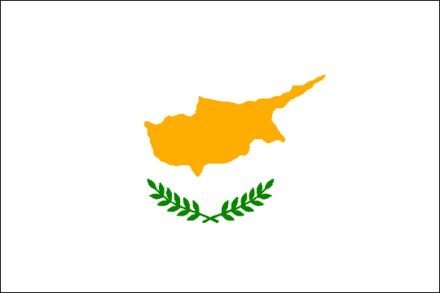
One of the few flags of the world where map of the territory is used. Orange color indicates rich copper deposits found in Cyprus for another 3000 BC. e. Under the image of the island there are two branches of olive trees, personifying both ethnic groups living in Cyprus - Greeks and Turks.
NO7. Kiribati
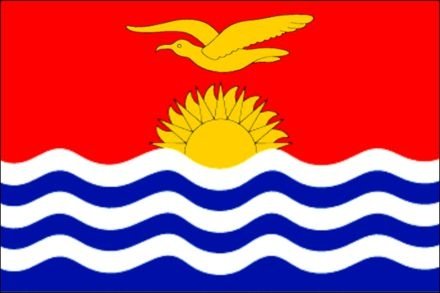
Red color symbolizes sky. Blue color symbolizes the Pacific Ocean, in which the islands of the country are located. Three white stripes symbolize three island groups of the country: Gilbert Islands, Phoenix and Line. Rising Sun Symbolizes the tropical sun, as Kiribati is located on both sides of the equator. 17 sunlight symbolize 16 islands in the Gilbert archipelago and Banaba Islands. Frigate symbolizes power, freedom and cultural dance Kiribati.
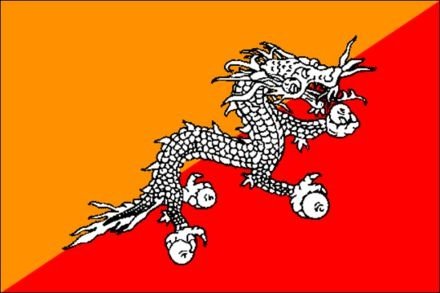
The dragon depicted on the flag symbolizes the local Tibetan name of Bhutan - the land of the dragon. He holds in claws gems, symbolizing wealth. The yellow field symbolizes the theocratic monarchy, and Orange - Buddhist religion.
NO5. Brazil
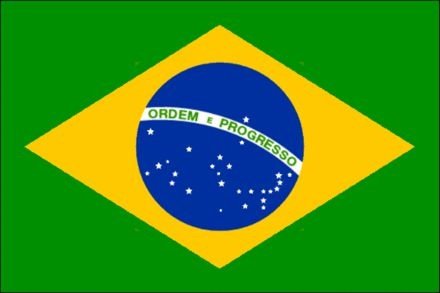
The Brazil flag is a green cloth with a yellow rhombus in the center. Inside the rhombus is a dark blue circle with 27 white stars. The circle is crossed with a ribbon with the National Motor of Brazil - "Ordem E Progresso" (with the port. "Order and Progress"). Green and yellow - Brazil's national colors. Green color symbolizes the forest wealth of Amazonia, and yellow - gold reserves: in the XVI-XIX centuries, the world's largest gold mining mines were in Brazil.
The location of the stars on the flag depicts the sky over Rio de Janeiro in the morning of 9 hours 22 minutes 43 seconds November 15, 1889 - at the time of the proclamation of the Brazilian Republic. Each of the 26 states, as well as the federal district, is its star.
NO4. Papua New Guinea
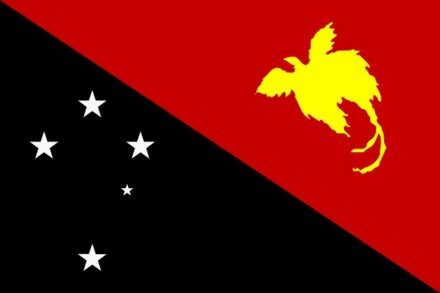
Five stars are the constellation South Cross, red and black colors are traditional for the art of Papuans, and the paradise bird depicted by flying is found almost only in New Guinea.
And Troika Leaders
NO3. Switzerland
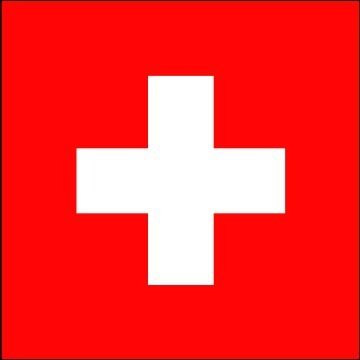
Unlike most other state flags, Switzerland flag has a square shape. Comes from the coat of arms of Canton Schwitz (one of three cantons who formed the Swiss Confederation in 1291, along with Uri and Unterwalden).
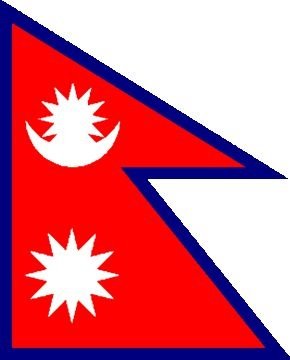
The only indirectal national flag and one of the two non-gravy flags of sovereign education (the other is Ohio Flag, USA). The flag is a simplified combination of pennants of two branches of the wound dynasty - past rulers of the country. Blue color of the flag border symbolizes the world, and dark red - national color Nepal. Two royal Symbol They personify the hope that Nepal will exist as long as the sun, and the moon.
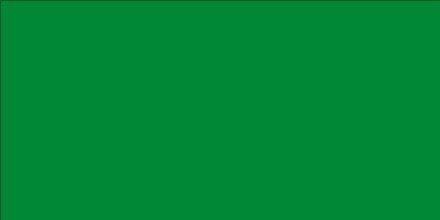
Today, this is the only one in the world in the world, without any additional details, drawings, inscriptions, etc. The green flag color symbolizes Islam, the country's state religion, as well as the "green revolution" of Muammar Gaddafi.
There are several hundred national flags in the world, and most people with difficulty distinguishes the flag of one country from another. Of all the many state flags, you can allocate only a few unique, which cannot be confused with anything. The National Flag of Israel is one of them.
His appearance was preceded by a long history.
In the biblical times, the Jews did not have a single banner: a description of the flags of 12 knees of Israel is given in Midrace, and in the books of the prophets it is mentioned the word "carried", very close to the meaning modern term "Flag" and the indicated signalmark that was installed on the elevation or strengthened on the vessel. In one of the most ancient documents preserved to this day, the Dead Sea scrolls are also a description of the flags that were used in military campaigns: various inscriptions were applied to raise the battles (for example, the "people of God").
During the long centuries, the Jews also did not have its own flag, because there was no state and its attributes. Nevertheless, in various historical sources, you can meet the mention of the banners with which those or other Jewish communities complained about the authorities in the Middle Ages and in the Renaiss Epoch. Jews of Prague in 1254 received a special banner from the star of David as a gift from Emperor Charles IV on a red background. Two centuries later in the Jews of the Balkan city of Buda appeared a red flag with four stars (two six-pointed two), then, in the middle of the XVII century, Prague Jews in recognition of their merit when defending the city from the Swedes again received a red flag with yellow star David, in which another star was inscribed. Another Jewish flag - the banner of David Reuveten - refers to the first half of the XVI century. This banner was white with an embroidered gold ten commandments (according to another version - letters constituting the word "Mackway"). With this flag in 1532, the refovery, together with Shlomo, appeared in Regensburg in front of Emperor Carl V.
Nevertheless, the unified national flag, symbolizing the revival of Jewish statehood, appeared only in the last century.
The Israeli State Flag was officially approved several months after the proclamation of the Jewish state, but in fact the white-blue cloth with David star appeared a few dozen years earlier.
 When Theodore Herzl still dreamed of a future Jewish state, he was already thinking about how his state flag should look like. He wrote about this in his book "Jewish state", saw the light in 1896. If the proposal of the founder of the Zionist movement was embodied, then the state flag of our country today would represent a white cloth with seven gold stars. The white color of the field was, according to the Herzlya, symbolize the "new and clean life", and seven stars - seven working hours (we note in brackets that in modern Israel, the working day is not seven, but nine o'clock). For the influence of the Zionist organization Herzl I agreed to put on the flag of Magen David, but insisted that six stars are inscribed in the corners of Magen David, and the seventh placed above it
When Theodore Herzl still dreamed of a future Jewish state, he was already thinking about how his state flag should look like. He wrote about this in his book "Jewish state", saw the light in 1896. If the proposal of the founder of the Zionist movement was embodied, then the state flag of our country today would represent a white cloth with seven gold stars. The white color of the field was, according to the Herzlya, symbolize the "new and clean life", and seven stars - seven working hours (we note in brackets that in modern Israel, the working day is not seven, but nine o'clock). For the influence of the Zionist organization Herzl I agreed to put on the flag of Magen David, but insisted that six stars are inscribed in the corners of Magen David, and the seventh placed above it
Designer ideas regarding the flag of the future state were not limited to Herzl's proposals. Moreover, for a good ten years before the emergence of the above-mentioned labor, there was already a flag of a Zionist organization in his modern video. He was two blue stripes on a white background, with Magen David in the center.
For the first time, this flag was empty in 1885. In Rishon-lesion, one of the first Jewish cities of the era of Zionism. In those days, the exchange of information took place for many orders of magnitude slower than now, and therefore the delegates of the 1st Zionist Congress knew nothing about the existence of this banner. but best ideas, as you know, lie on the surface and very often coincide.
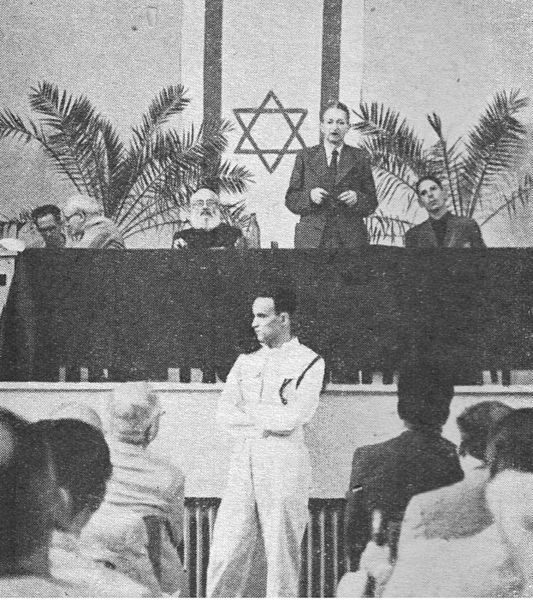
David Wolfson, who headed the Zionist organization at that time, the basis of the flag created by him put the idea of \u200b\u200bTalit - the prayer covered white color, adding Magen David in the middle. It was this version of the flag in September 1933 was approved by the delegates of the 18th Zionist Congress.
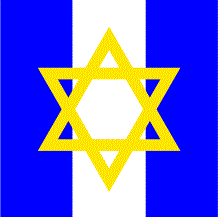 It was this image by order by U. Herchilla was based on the official banner of the Jewish Brigade during the Second World War. And it was this flag that became the forerunner of the modern state flag of Israel, whose official statement took place at one of the first meetings of the Knesset (Israeli Parliament) on October 28, 1948 - just five months after the declaration of independence was announced.
It was this image by order by U. Herchilla was based on the official banner of the Jewish Brigade during the Second World War. And it was this flag that became the forerunner of the modern state flag of Israel, whose official statement took place at one of the first meetings of the Knesset (Israeli Parliament) on October 28, 1948 - just five months after the declaration of independence was announced.
Despite Extremely young age States, the issue of choosing the flag came with all seriousness. 170 projects were presented, most of them are descriptive. It is worth noting that not all authors leanned towards the choice of a white-blue palette. In many projects used orange, yellow and even purple and scarlet - colors royal power. Yellow as the main color of the Jewish National Flag used the smallest popularity: after only three years after the end of World War II, in the memory of millions of Jews there were still fresh memories of yellow Starswho put on the Jews in the third Reich.
By the way, in the White Blue version, the national flag could look different than now. Originally, it was present not two, but three parallel strips, and not horizontal, and vertical: two blue on the edges and white in the middle with a blue star of David in the center. But the final version of the artist Richard Alel was defeated.
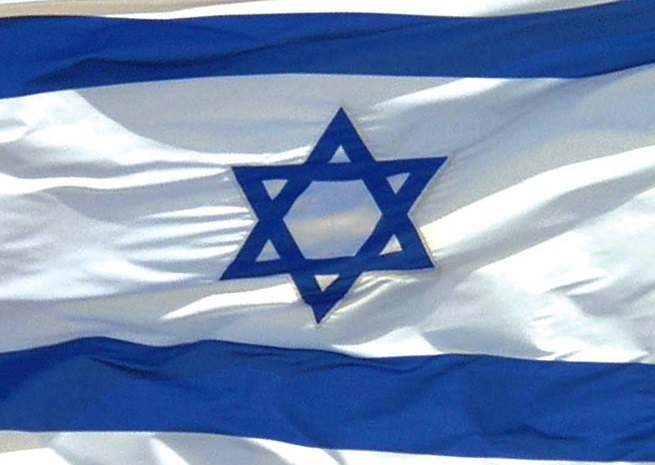
The modern flag of state Israel is a white rectangular cloth with two horizontal blue stripes along the edges and a star of David in the center. White color symbolizes purity, and blue stripes - sky and sea. (There is also a version that the bands denote the River Nile and Effrata and thereby symbolize the dream of great Israel). The star of David on the flag is a symbol of Jewry, the sign of power and victory. In addition, the six-pointed star reminds of six most important virtues: chastity, unconsciousness, sincerity, modesty, humility and generosity.
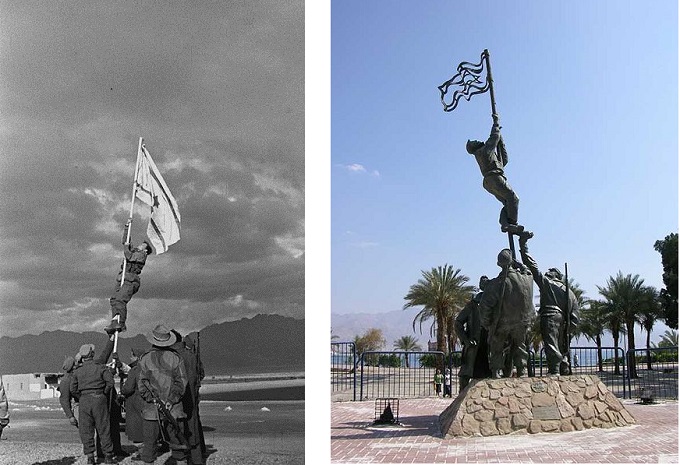
In the history of the young Jewish state, a special place, along with the official flag, occupies the so-called "ink flag", with which one of the glorious pages of the war of independence is connected. On March 5, 1949, the Overactions "Wvda" began for entering the Red Sea five days later, two Israeli military brigades - "Negev" and "Golun" - advanced to the southern city of Umm-Rashahrash and occupied him without a single shot. Their lightning thrust and instant bloodless victory were completely unexpected, so much that there was not even a banner at hand, which should have been placed on the site of victory. And then the fighters of Naspech built the homemade flag, drawing a star of David on a piece of white matter in ink. Now at this place, in the center of the southern city of Eilat, built on the site of Umm-Rashrash, is a monument. He captured the very historical moment of the "ink flag" waters, which became a symbol of the victory of the Israel Defense Army in Eilat during the Arab-Israeli War of 1947-1949.
 The Israeli national flag at the beginning of this century was in space. For the first time it happened in January 2003, when the first Israeli astronaut Ilan Ramon raised a white and blue banner on board the Columbia Shuttle. That flight ended tragically: spaceship Wrecked at the entrance to the dense layers of the atmosphere of the Earth, and the entire crew died. It happened on February 1, 2003. Seven years later, the Israeli state flag was again delivered to an near-earth orbit. This time he was raised by Canadian Astronaut of Jewish origin Ebor Reizman, flying in the crew of the Atlantis Shuttle. On this flag, in addition to the usual attributes, there was also the name of the first Israeli astronaut of Ilan Ramona.
The Israeli national flag at the beginning of this century was in space. For the first time it happened in January 2003, when the first Israeli astronaut Ilan Ramon raised a white and blue banner on board the Columbia Shuttle. That flight ended tragically: spaceship Wrecked at the entrance to the dense layers of the atmosphere of the Earth, and the entire crew died. It happened on February 1, 2003. Seven years later, the Israeli state flag was again delivered to an near-earth orbit. This time he was raised by Canadian Astronaut of Jewish origin Ebor Reizman, flying in the crew of the Atlantis Shuttle. On this flag, in addition to the usual attributes, there was also the name of the first Israeli astronaut of Ilan Ramona.
The Israelites are proud of their flag. Every spring on the eve of the celebration of Independence Day on hundreds of thousands of Israeli cars appear white-blue flags, and the balconies of urban apartments decorate flags in natural magnitude. Our compatriots do this not at all of the squeezed patriotism and not for the sake of the desire to spend the authorities. Israelis are very free and very sincere people. And if they raise the flagpole next to the house or hang on the balcony of the white-blue flag, then they believe in the present and the future of our country.
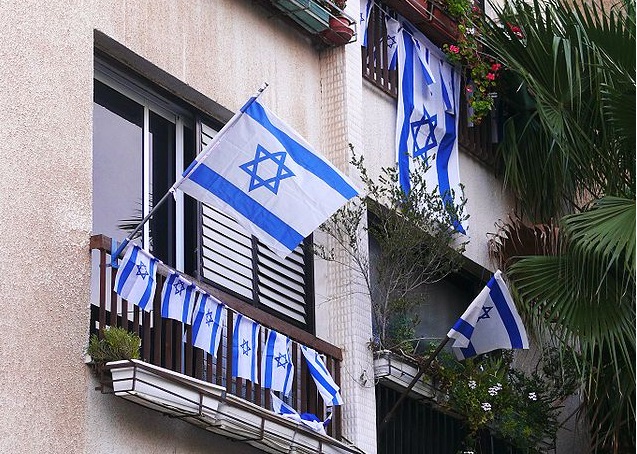
Source of photoillus - Wikipedia.
Let's start, perhaps with 2 most unusual. There are 2 states in the world (I have recently 3), faithful and painted side (AVERS) are different. it Saudi Arabia And Paraguay.
The modern flag of the Kingdom of Saudi Arabia was adopted on March 15, 1973.
On a green background (one of the main Islamic colors) you can watch the white Arabic liner and the white saber under it. Beautiful Vyazh is Shahad (the symbol of faith in Muslims), which sounds like in the Arabic of La Ilyha Illy Llah Muhammadun Rasul-Llyh or there is no god except God and Mohammed Prophet. Saber (or sword) has a two-way value. Firstly, this is a hint of one of the favorite clins of the Prophet Hatf, and secondly, one of the birthmarks of the founder of the Saudites dynasty and the first monarch of the state of Abdel-Aziza Ibn Saud.
flag of the Kingdom of Saudi Arabia
The sword added to the flag it is he and in combination with Shahad, he must personify justice and justice. A feature of this flag is the ability to see the image on it and read the saying from the Koran on both sides. To do this, in the manufacture, the flag is sewn from two completely identical cloth. The flag is never descended (even in the period of mourning) and is very limited in use.
On the flag of the Republic of Paraguay and at all, a different pattern on the facial and revolving parts. IN today He was adopted in 1990. The French tricolor was taken as the basis, though they decided to make stripes horizontal, so there is a similarity not with French, but with Dutch. But in any case, red, white and blue - republican colors. They symbolize patriotism, courage, equality and justice (red), inflexibility, unity, peace and purity of thoughts (white), kindness, love, accuracy, a sense of reality and freedom (blue).
facial I. back side Flag of the Republic of Paraguay
On the front of the flag on the middle white line is the coat of arms of the state. It has a rounded shape, white back background and black contour. Along the contour, the second ring is a red band, containing the yellow inscription Republica Del Paraguay (Sp. Republic of Paraguay). In the center of the entire coat of arms is a yellow five-pointed star On a round blue background, framed on the left side of a green palm branch, and with the right-green olive branch. Yellow star is the so-called "shining May Star", which symbolizes the date of independence, on May 14, 1811, that is, a five-pointed star in honor of 5 months a year. The blue background is the country's peaceful sky and the water of the main river Parana, from which the name of Paraguay was formed. Palm and laurel branches symbolize fame and peace accordingly.
paraguay map
On the revolving side of the flag is not a state coat of arms, but the printing of the Ministry of Finance. The lion depicted on the press protects the pole crowned by the Frigian cap, which symbolizes the readiness for the protection of freedom and independence. Over the cap, we can see the divisian tape, on which the inscription "Paz Y Justicia" is applied with yellow letters (Sp. "Peace and Justice"). It remains only to say, the aspect ratio of the flag is estimated as 3: 5.
Another awesome flag of the Filippines of the Republic of Philippines can be considered in its own way.
The location of the two isometric horizontal strips, with the addition of an equifiable triangle from the river edge, it looks like a Czech flag. But unlike the Panslavan colors of the Republic of Czech Republic, the Philippines have a different color Value. With the goal of saying the colors, these are these thanks to the American people for support in obtaining independence. Red means patriotism, courage and blood, spilled patriots.
filipin
Blue - peace, truth and justice. White triangle Three fundamental principles - freedom, equality and fraternity. The Golden Sun is the symbol of the Philippine revolution of 1896 against the Spanish dominion, and eight rays mean the number of provinces in which the revolution began the first: Manila, Cavita, Bulakan, Pampang, Nueva-Echiha, Tarlac, Lagoon and Batanhas. Three golden stars along the edges of the triangle means 3 main island groups of the country: Luzon, Visai Islands and Mindanao.
So what is the uniqueness of this flag, you ask? And his feature is that during the war, the Red and blue stripes change places. And thus, this is the only state banner on earth, which varies depending on the political situation.
state Staging Turkmenistan
One of the most interesting and memorable flags is a banner of one of former republics Soviet Union - Turkmenistan.
The flag was adopted on February 19, 1992, changed on February 1, 1997. It was developed under the control of Saparmurat Niyazov - Turkmenbashi I, a person very extraordinary and fondant, so that the unusual of the state standard should not be surprised. Main green color The flag with the crescent is quite explained and the common symbol of Islam. And then more interesting - next to the crescent are 5 white five-pointed stars. Five stars denote five regions (velayats) of the country (Akhal velayat, Balkan velayat, Dashoguz velayat, Lebap velayat and Maryian velayat). They also symbolize five human feelings. Five rays of each star symbolize five states: solid, liquid, gaseous, crystalline and plastic. The combination of white crescent and stars also means faith in a bright future, and also symbolizes calm and kind. Next to the stars passes the vertical red strip, consisting of 5 main ornaments (Göli), which are used in Turkmen carpets, because the carpet is one of the main characters of Turkmenistan.
famous Turkmen carpets
Each of the ornaments is one of 5 Turkmen childbirth: Tekintsy, Yomuda, Saryki, Chovdara, Ersary. So there is now a huge number of admirers of carpets now where to ride your enthusiastic look :-)
In 1995, the President of Turkmenistan announced the policy of neutrality, which was recognized by an anonymous vote at the UN General Assembly on December 12, 1995. Two crossed olive branches added to perpetuating this event on the gel flag, similar to the branch on the UN flag.
And one more interesting moment. In accordance with the Law "On the State Flag of Turkmenistan" is "not rising on buildings in which overhaulIn disassemble, or on buildings, where the facade is repaired. " A rather curious reservation.
flag Lesotho
The flag of the Kingdom of Lesotho is interesting because it is probably the only one from all state flags depicted a headdress. This is the so-called moss - the hat of the head of the tribe of the people of Soto, inhabiting these territories. The colors of the flag symbolize the world (white), rain (blue) and prosperity (green).
The next curious flag is a stamp of the Republic of Zambia. It is curious to the fact that the main drawing of the flag is not depicted in the ride, in the left side of the flag, and in the opposite. In the lower right corner, a tricolor is depicted from vertical stripes red, black, orange flowers, and in the upper right corner - an image of Orlana-Krikun (lat. Haliaeetus Vocifer) with opened wings. This eagle is one of the main symbols and totems of the country.
state Standard Zambia
Flag color value as follows:
Green color - Natural wealth.
Red color - blood shedding for the independence of the country
Black color personifies the population of Zambia.
Orange color symbolizes the wealth of a country with mineral resources (first of all, copper).
Officially, for the first time the flag was raised on October 24, 1964. The form of Eagle changed in 1996. The proportions of the flag 2: 3.
cape Verde Flag
Several assimitric, which means interesting for our attention of the Republic of Cape Verde (Green Cape Islands), adopted on September 25, 1992. Ring of gold stars symbolizes the unity of all parts of the country. These ten stars and they represent the main islands of the archipelago: (Santiagua, Santo Antan, San Vincent, San Nicholas, Sal, Boa-Vista, Fog, May, Brava and Santa Lucia) Colors symbolize the sky and the sea (blue), Peace (white) and the efforts of the people (red). Flag proportions 10:17.
banner of the Republic of Nauru
As a bit dropping out general Plan It is the flag of the smallest independent republic on Earth, as well as the smallest island state, and besides the only country in the world, which has no capital - the Republic of Nauru. The area of \u200b\u200bthis dwarf state. Located in the Pacific Ocean, only 21.3 km². The flag was adopted at the time of independence in 1968. The blue flag of the flag is denoted by a quiet ocean and a peaceful sky above it. The yellow line denotes the equator, and directly under it is the island represented by a white star. 12 rays of the star indicate 12 initial tribes Nauru.
Well, the last flag of which I will tell will be the staging of the Seychelles. This banner was taken on June 18, 1996 and is distinguished by an interesting location. The flag was originally a combination of colors of two main political parties, a democratic party (which is represented by blue and yellow) and the Seychelles of the People's United Party (represented by white and green). The red strip united both of these parties.
Flag of Seychelles
Naturally, the colors of the banner have other meanings. Blue symbolizes the sky and the sea surrounding the Seychelles; Yellow presents the sun and ease of life; Red - the people and his desire to work in unity; White personifies social justice and harmony; And green symbolizes the Earth and the environment.
